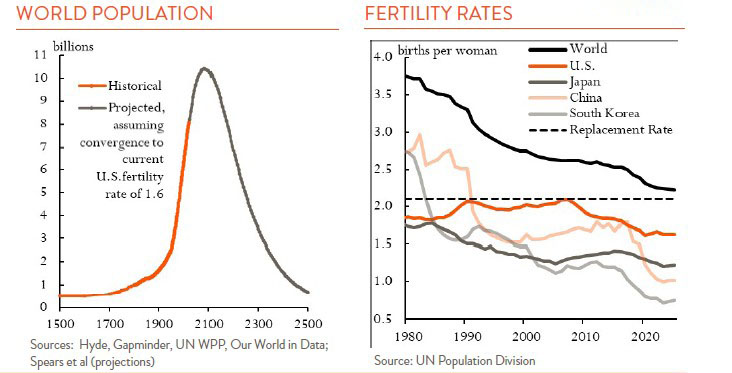Demographics is the study of population and the make-up of that population. Birth and death rates factor into this analysis as do the age and sex breakdown of the population.
Some argue that if you know the demographics of the world, you can predict the future. Historically, population growth has driven greater output, increased overall demand, created new markets, and pushed up personal incomes. Population growth, however, is not something everyone is in favor of. An increase in population puts greater pressure on resources, increases environmental damage, and requires an increase in agricultural production, which is not evenly spread among all people. Some end up with more, some less.
The biggest problem with demographic data is that it is not stable. Back in 1969, Paul Ehrlich published, “The Population Bomb”. Ehrlich argued that rapid population growth would have devastating consequences for the world, including mass starvation. Population growth was rapid prior to 1969. World population did not pass one billion until 1805. It then took just 123 years for population to double, and by 1969 world population had nearly doubled again.

What Ehrlich and other population alarmists did not know at the time was that world population growth rates were about to peak. It was not uncommon in 1969 for families to have five or more children. Today it is estimated that the world may have slipped below the threshold replacement level of 2.1 children per female. This would be the first time in recorded history that this has occurred.
Many countries are alarmed at the possibility of a declining population, fearing that this will lead to a shortage of workers, slower (or no) economic growth, lower tax revenues, reduced military power, inability to pay for the elderly, and social unrest. The list goes on.
China ended its one-child policy in 2016, but its birth rate has continued to fall. Many countries are offering payments for larger families, but results have not been encouraging. Vice President J.D. Vance is trying to shame Americans into having more children, ridiculing those “childless cat ladies.” Another avenue to population growth is immigration, but this is not a winning policy prescription in most developed countries today, certainly not in the U.S.
The one thing we do know from demographics is that if current trends in fertility rates continue (see charts below) global population will grow for another 75 years or so and then contract. Demographics is indeed destiny, as long as you know the future demographic data! Paul Ehrlich learned this painful lesson. As the sociologist Philip N. Cohen has remarked, “if you think you have a model now that predicts birth rates in two hundred years, you’re just drawing lines on a chart.”